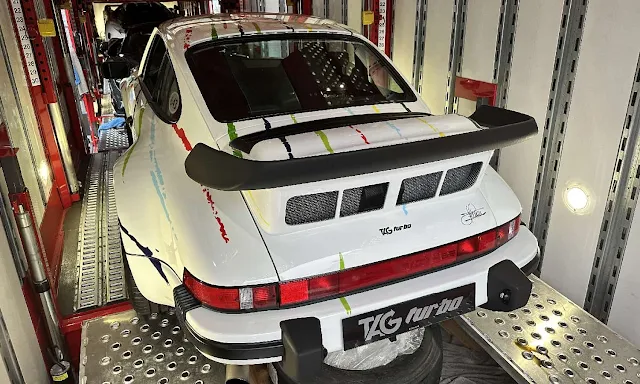Luxury vehicle ownership comes with high expectations – performance, aesthetics, exclusivity, and above all, security. For collectors and high-net-worth individuals, transporting and storing these vehicles is, of course, a matter of convenience, but most importantly, it’s a matter of trust. Yet, even with advanced technology and protocols in place, the luxury auto transport and storage industry is facing a sharp and concerning rise in theft.
Recent reports show a growing wave of organized criminal activity targeting high-value vehicles, both in transit and while parked inside seemingly secure storage facilities. These aren’t simple break-ins or random acts. Today’s theft operations are calculated, often involving insider knowledge, fraudulent credentials, and digital manipulation. In a space where precision and protection are supposed to be guaranteed, the vulnerabilities are becoming harder to ignore.
As a company deeply embedded in the transportation and safeguarding of rare, exotic, and collector-grade automobiles, we’ve been closely monitoring these developments. In the following article, we’ll take a deeper look at what’s driving the surge in vehicle theft.
Tracking the rise in high-end auto thefts
The luxury vehicle transport and storage industry is experiencing a significant uptick in thefts, with organized crime rings employing increasingly sophisticated tactics. These criminal networks exploit vulnerabilities in logistics and security protocols, leading to substantial financial losses and shaken consumer confidence.
A notable example involves a recent case where a Michigan resident purchased a high-end Rolls-Royce from South Florida. The vehicle was scheduled for transport to his home, but it never arrived. Investigations revealed that thieves had intercepted the delivery by manipulating transport orders, effectively rerouting the car to a fraudulent destination. This incident underscores the evolving methods employed by criminals targeting luxury vehicles during transit.
Such cases highlight the pressing need for enhanced security measures within the industry. As criminals continue to refine their strategies, stakeholders in luxury vehicle transport and storage must adapt accordingly to safeguard assets and maintain trust.
How thieves today are stealing luxury vehicles
Gone are the days when car theft meant smashing a window and hotwiring an engine. Modern theft rings operate more like coordinated business operations than petty crime. These groups often work with insider information, access to advanced technology, and forged credentials that make their moves nearly undetectable – until it’s too late.
One common tactic involves identity spoofing. Thieves pose as legitimate transport carriers, using stolen or fabricated credentials to pick up vehicles under the guise of scheduled delivery. With a clipboard and branded attire, they can walk away with a $300,000 vehicle while everything appears routine.
In some cases, criminals manipulate digital tracking and dispatch systems. By intercepting communication or gaining access to shipment details, they reroute vehicles mid-transit to false destinations, sometimes with the help of hacked driver apps or insider collaboration.
Then there’s the rise of key fob reprogramming. With the right tools, thieves can intercept or clone a vehicle’s wireless signal, gaining access without forced entry. This method is particularly effective when high-end vehicles are left in public valet areas or unsecured storage lots, even briefly.
For storage facilities, vulnerabilities often appear where automation meets complacency. Poorly monitored entry points, lack of live surveillance, or failure to update access control systems leave even climate-controlled spaces open to exploitation.
These tactics show that luxury vehicle theft today is calculated, fast-moving, and alarmingly professional. For owners and transport companies alike, understanding these methods is a critical first step toward prevention.
Where luxury vehicles are most at risk
Understanding where theft tends to happen is just as important as knowing how it’s executed. In the world of high-end car logistics, two primary environments pose the biggest risk: in-transit handoffs and unsecured storage. Each presents its own set of challenges, as well as opportunities for theft rings to exploit.
Pickup and delivery
Vehicles are especially vulnerable during pickup and delivery transitions. These moments often rely on trust and timing, where one carrier releases a vehicle to another or to the final recipient. If identification protocols are loose or not consistently followed, a thief with the right paperwork (or a convincing uniform) can pose as a legitimate transporter and disappear with the vehicle before anyone questions it.
Rest stops
Rest stops and unsecured parking lots are also high-risk points during long-distance transport. Enclosed carriers may be briefly unattended overnight, and without real-time GPS tracking or physical surveillance, a trailer full of exotic vehicles becomes a soft target. Thieves can breach a trailer in minutes if they know what’s inside and have the tools to act quickly.
Storage facilities
Despite often appearing secure on the surface, storage facilities can pose just as serious a threat. Some garages rely on outdated access control systems or only use basic keypad entry. If those codes are shared or leaked, intentionally or not, the facility is left exposed. Additionally, vehicles stored temporarily between sales, auctions, or transport legs may not receive the same oversight as permanent collections.
Even valet and dealership zones have come under increased scrutiny. In some theft cases, vehicles were taken not with brute force, but through lapses in communication. Typical examples include keys handed over without verification, security cameras turned off for maintenance, or logs left unsigned. These moments of convenience can become moments of loss.
Setting a higher standard in vehicle security
At JP Logistics, safeguarding luxury vehicles is the foundation of your services. Unlike companies that rely on public brokerage boards or third-party dispatch systems, we manage every move in-house.
Our U.S.-based team of 11 professionals, supported by dedicated software engineers, works around the clock to ensure your vehicle is handled with precision and care. Clients are given access to a secure, private portal to monitor transport milestones, view inspection reports, and track invoices in real time.
Most importantly, we back our commitment with a guarantee: if your vehicle doesn’t arrive safely, we’ll refund the full purchase price. Because in this industry, trust isn't promised – it’s proven.



